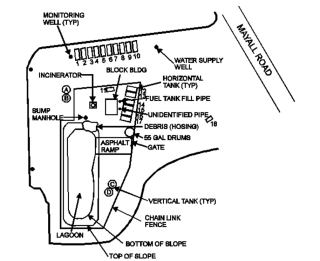(UPDATED) Gray Waste Site Slated For Removal From EPA’s Superfund List

UPDATE (APRIL 4): According to an updated press release, the EPA has extended public comment until May 2, 2022.
The U.S. Environmental Protection Agency (EPA) has proposed the removal of the former McKin Company Superfund Site located in Gray, Maine, from the National Priorities List (NPL). Such a removal is a major step in the Site’s cleanup efforts, although some remediation work will remain at the site for the foreseeable future.
Operation, maintenance, and monitoring activities will continue at the Site as needed. Although removing the Site from the NPL list is clearly a step forward, property owners within the superfund area are still not allowed to extract groundwater for the foreseeable future.
The seven-acre site located at 25 Mayall Road started as a liquid waste disposal facility in 1965. Between 1965 and 1978, the site hosted various facilities, including an incinerator, a concrete block building, an asphalt-lined lagoon, and storage and fuel tanks.
“This announcement marks a milestone in the decades-long effort to restore the site,” said Town Manager Nathaniel Rudy.
EPA's 30-day public comment period on the proposed deletion begins March 22, 2022, and closes April 20, 2022. The public may submit comments by mail or email to:
Mail: John Bryant
US EPA Region 1 Mail code: 07-1
5 Post Office Square, Suite 100
Boston, MA 02109-3912
Email: bryant.john@epa.gov
The State of Maine has reviewed and commented on the proposed deletion and agrees with the EPA’s proposal. The Administrative Record on the Proposed Deletion can be found here.
All Site-related materials can be found on the EPA’s website. Materials can also be accessed at the Gray Public Library at 5 Hancock Street, Gray, Maine.
You can learn more about this site and its proposed removal via the EPA’s press release.
